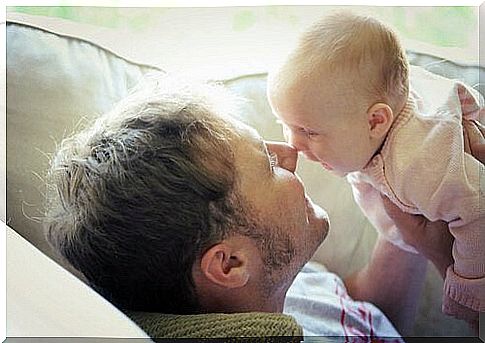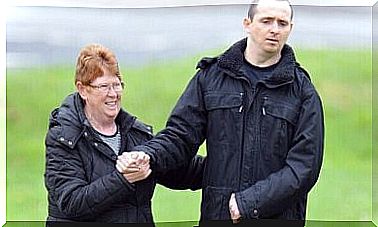Communication Between Babies And Adults

The most common belief is that babies cannot communicate until their first birthday. According to this idea, communication of babies with adults is non-existent during their first 12 months. However, new studies have shown that it is possible that this communication exists. The results indeed suggest that babies are born with an innate ability to communicate. This capacity is called intersubjectivity.
Babies’ communication with adults, of course, is not a dialogue. Rather, they are proto-conversations. The reactions of babies and parents can be thought of as conversations. When they don’t represent instinctive reflexes. The baby’s participation must be active. This recognizes experiences and reacts to them. To put it another way, babies would be aware of sharing experiences.

Babies’ (non) communication
Part of the scientific community that studies infant communication does not consider that there is intersubjectivity until a baby is between 9 months and a year old. On the other hand, some argue that babies have an innate capacity for intersubjective interactions. The problem is whether the interactions between babies and their parents serve to communicate and connect subjective experiences.
For those who deny that babies are intersubjectively, communication cannot exist until babies come to understand that other people can have experiences. This occurs at 9 months. A little later, at 14 months, babies begin to use proto-declarative scoring. They point to an object and, following the adult’s gaze, they see that the latter is paying attention to the object being pointed out. This means allows us to understand that babies are already capable, at this age, of inferring intentionality in other people. But how can this be verified before proto-declarative gestures arise?
Babies communicate
As we have seen, other authors consider that there is intersubjectivity. This innate ability would allow babies to communicate their subjective experiences from their first weeks of life.
To make this claim, these authors point out that babies do not need cognitive or symbolic elaborations to communicate. They would use emotions and the intention to communicate. In this way, they would be able to exchange experiences with their parents.
Even though intersubjectivity, from a theoretical point of view, may seem logical, science requires that we prove it experimentally. It is a question of demonstrating that one can consider the exchanges of expression, the emotions, the gestures, the vocalizations or the stammerings as a communication. Thus, a study analyzed, photograph after photograph, the variations in the expressions of children from two to six months old and of their parents.

The result
It has been found that facial expressions coincide and that there is a syntony in the emotional intensity of babies and parents. On the other hand, babies don’t just respond to the mother’s actions: they also elicit her responses.
Other studies have been able to verify that when an adult interacts with a baby and suddenly stops, the baby is waiting for a reaction. When it does not appear, babies start to get irritated and cry out for a response.
These results that we have commented on tell us that proto-conversations could be considered a form of communication. These would be the first dialogues in which babies would get involved.
According to all these results, babies perceive an adult’s attention when the adult looks at them. They also feel the emotional motivation that shines through his actions. Yes, they sense his intention to communicate and respond, in their own way, to that intention. Baby communication is therefore something innate.










